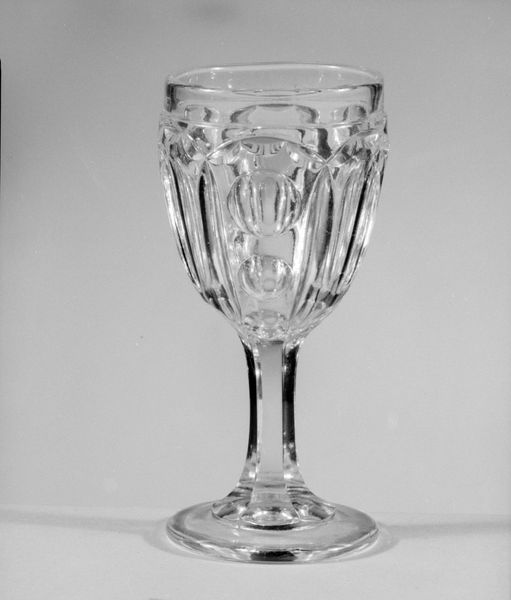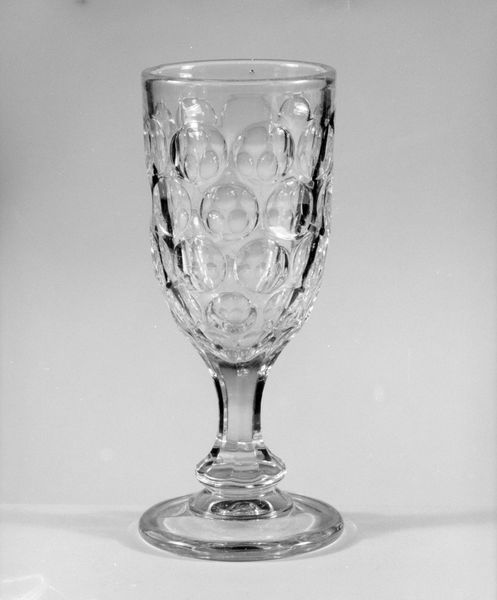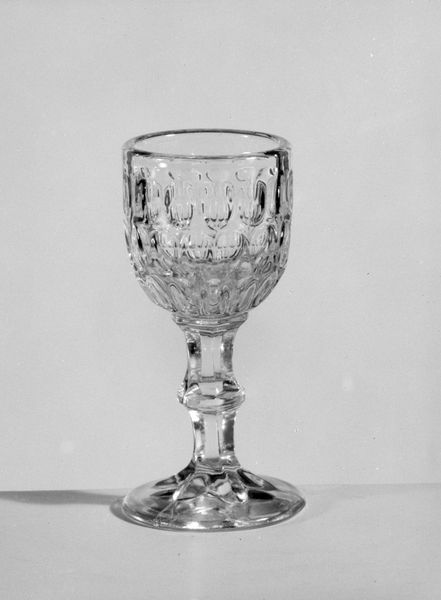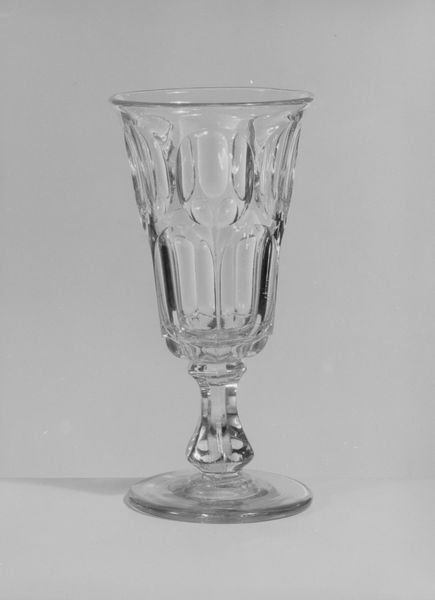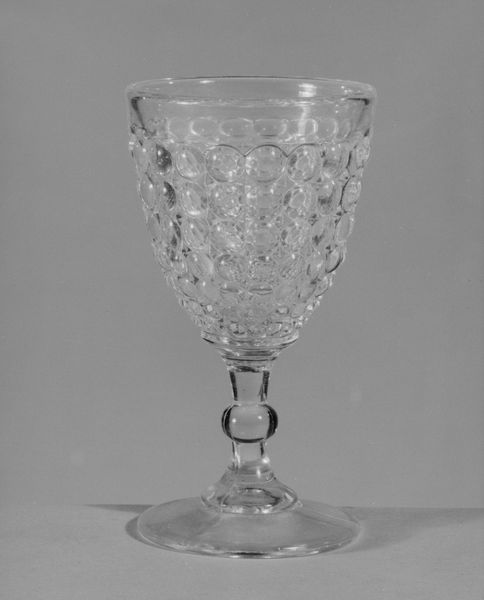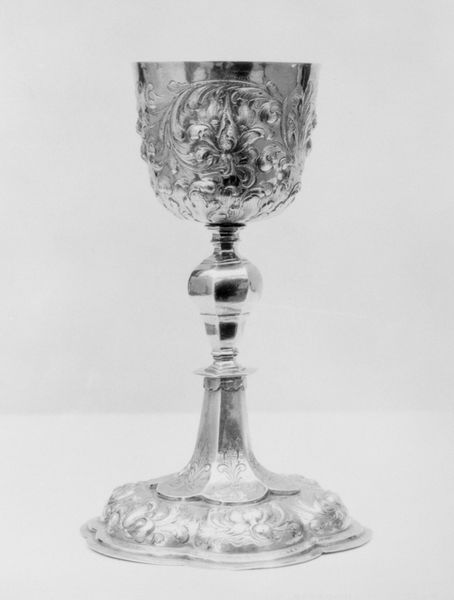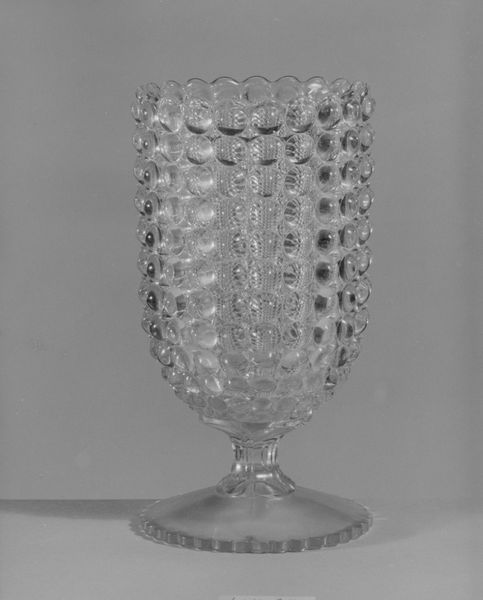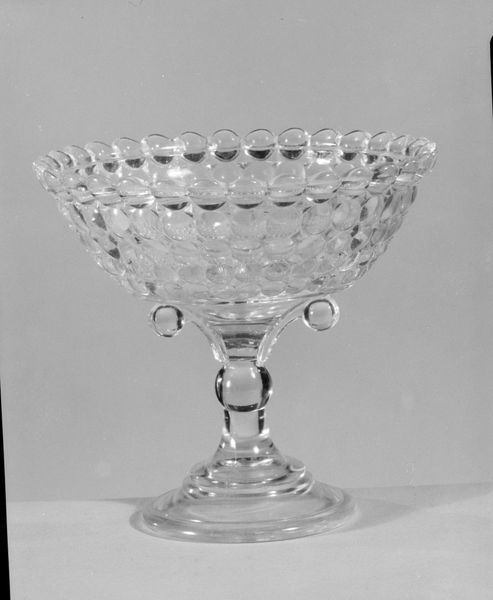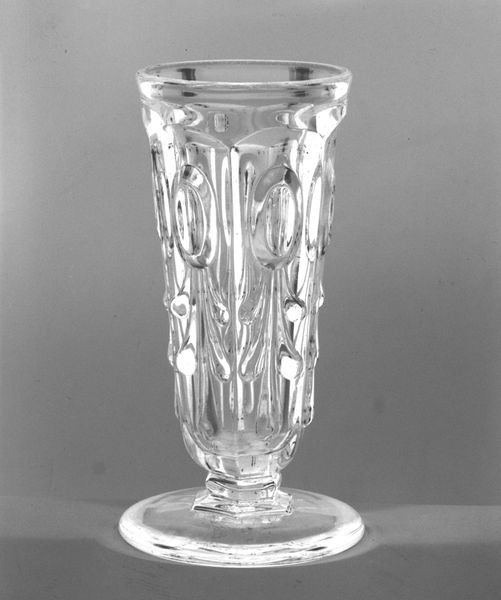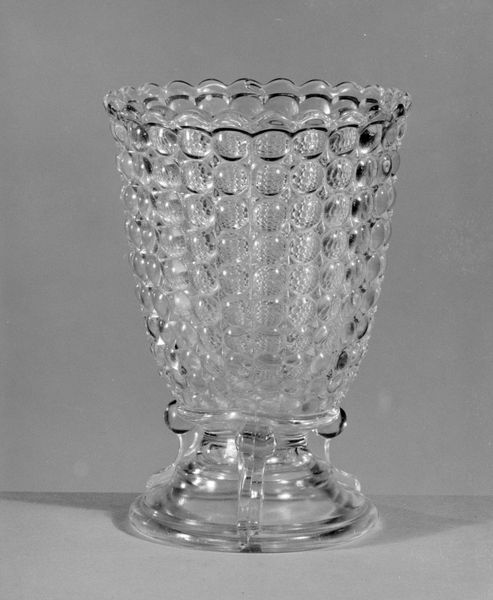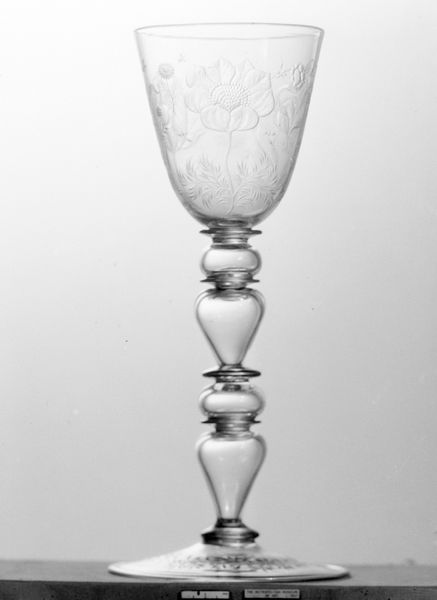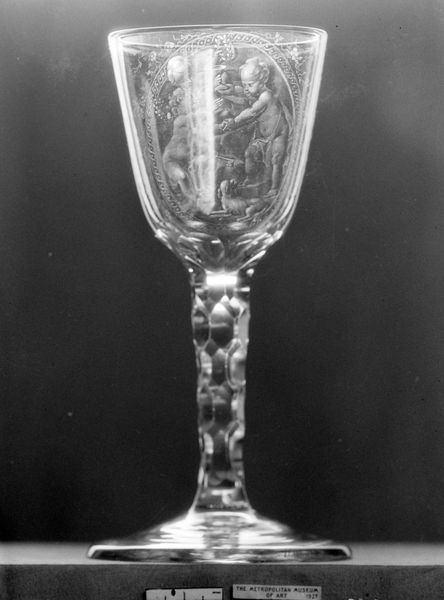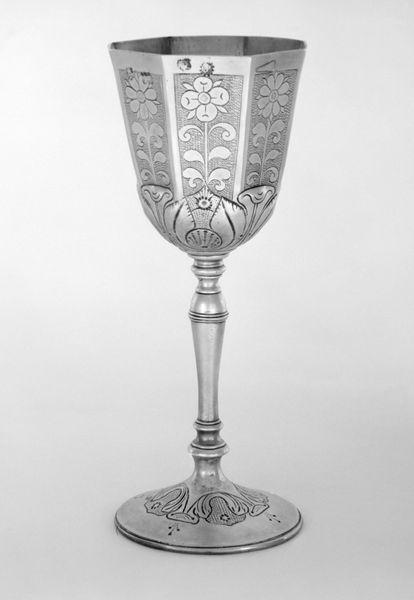
photography, glass
#
still-life-photography
#
photography
#
glass
#
geometric
Dimensions: H. 4 5/16 in. (11 cm)
Copyright: Public Domain
Editor: This image captures a "Wine Glass," crafted by the New England Glass Company between 1860 and 1870, and currently held at the Metropolitan Museum of Art. What strikes me is the intense geometry and the play of light and shadow. What symbolic meaning might be embedded within such a detailed piece? Curator: Consider the context. The mid-19th century saw an explosion of interest in ornate, geometric designs, mirroring a fascination with the natural world, as interpreted through scientific lenses. Notice how the facets refract light, almost like a kaleidoscope. Do you see echoes of gemstones or even microscopic organisms? Editor: I can see how those repeating patterns could relate to ideas about science. Are you suggesting that even everyday objects could be imbued with these kinds of symbolic links? Curator: Absolutely. Glassware of this period often reflected societal aspirations, even anxieties, around industrial progress and newfound scientific understanding. The clarity of the glass itself becomes a symbol, doesn’t it, a symbol of transparency, knowledge, and perhaps even a controlled, almost clinical, view of the world. What feeling do you get from that intense precision? Editor: I feel the crispness of the edges. The intricacy reminds me of fractals. A bit overwhelming, maybe, yet strangely elegant. Thanks! Curator: A pleasure. It's remarkable how even a single glass can become a lens through which we view an era's hopes and beliefs.
Comments
No comments
Be the first to comment and join the conversation on the ultimate creative platform.
